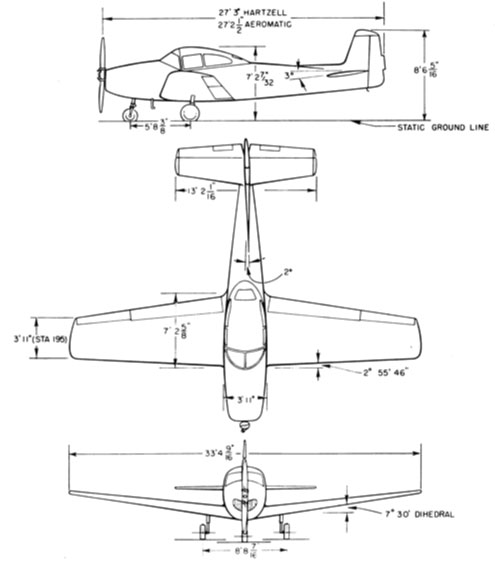The Navion cruised comfortably at about 150 mph.
American military services used the L-17 from the late 1940s through the early 1960s for liaison, reconnaissance, light cargo and forward air control (FAC) missions. Six even became target drones. Designed for civilian aviation and first flown in 1946, North American introduced this aircraft as the commercial NA-154 Navion. The United States (US) Army Air Forces went on to order 83 military versions under the designation L-17A.
Later, Ryan Aeronautical Company, having bought the design and manufacturing rights from North American, built 164 improved L-17B Navions for the US Air Force before production ended in 1949. Eventually, 35 A-models were converted to L-17Cs with improved brakes and greater fuel capacity. During the Korean War, several US Air Force L-17Cs were used as FAC aircraft. All US Air Force L-17s were redesignated U-18s in 1962. While in service, the Navion gained the nickname “poor man’s P–51” since it shared several of the Mustang’s stout design features, but no common parts.

Serial Number: NAV-4-1300
Manufacturer: Ryan Aeronautical Company
Crew: One
Engines: Continental O-70-7; 185 horsepower
Wingspan: 33 feet 5 inches
Length: 27 feet 4 inches
Height: 8 feet 7 inches
Weight: 2,950 pounds (loaded)
Speed: 163 mph
Range: 700 miles
Service Ceiling: 11,000 feet
Armament: None
Cost: $9,000
The Navion on display at Hill Aerospace Museum was the personal plane of former Utah Senator Jake Garn. Senator Garn is the only pilot in aviation history to have aviation wings from the Navy, US Air Force and NASA. In 1992, he also received one of aviation’s most coveted honors, the Wright Brothers Memorial Trophy for “a lifetime of public service in government and active participation in all segments of US Aviation, as a military and civilian pilot, astronaut and as one of the US Senate’s most effective aerospace spokesmen and legislators.” The plane has been fully restored and bears the patch from Senator Garn’s space mission. It was donated to Hill Aerospace Museum by Jake Garn in 2020.
The Navion cruised comfortably at about 150 mph.
Despite such a small aircraft, the Navion was capable of carrying a load of about 800 pounds.
The Navion could take off and land in about 1100 feet.